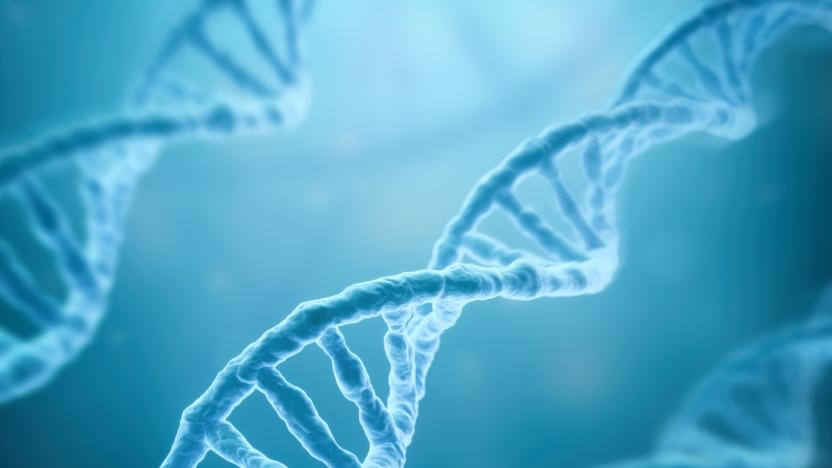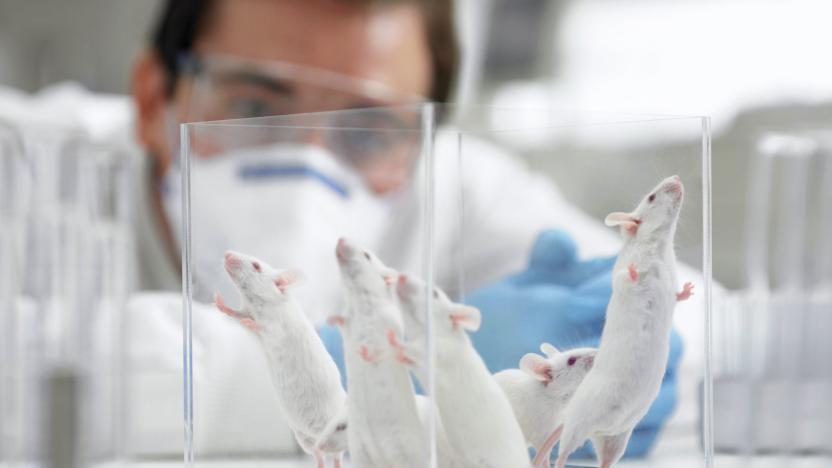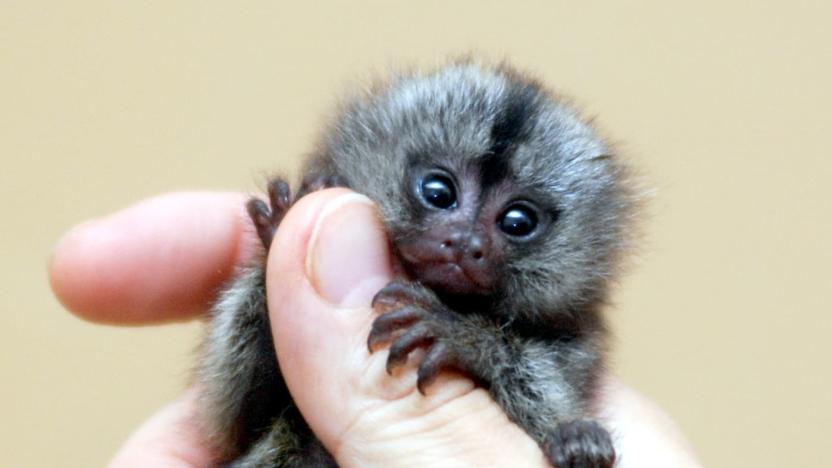geneticengineering
Latest

FDA removes restrictions on genetically modified salmon
Genetically modified fish are about to become more of a practical reality in the US. The Food and Drug Administration has lifted an import alert on AquaBounty's genetically modified AquAdvantage salmon eggs, allowing the fish to reach the US over three years after they received initial approval. Congress told the FDA in 2016 to block modified salmon until it issued labeling guidelines, and the Administration believes Congress' newly-enacted National Bioengineered Food Disclosure Standard meets that criteria.

China detains scientist who claims to have made gene-edited babies
China was quick to halt the work of scientist He Jiankui after he claimed to have created the first genetically edited babies, but that apparently wasn't enough. After weeks of uncertainty surrounding He's whereabouts, the New York Times has learned that the government has placed the researcher under house arrest at a housing facility in the Southern University of Science and Technology in Shenzhen. He can make calls and send emails, but he can't leave. Guards prevent people from getting close to either He's de facto residence or the offices involved in his research.

Chinese scientist claims he edited babies' genes with CRISPR
A Chinese scientist claims to have created the world's first genetically-edited babies using the CRISPR/Cas9 tool. He Jiankui (pictured) told the Associated Press that twin girls, Lulu and Nana, were born earlier this month following embryo-editing using CRISPR to disable the CCR5 gene, which allows the HIV virus to infect cells. An American scientist, Michael Deem, also reportedly assisted He on the project at the Southern University of Science and Technology of China.

CRISPR editing may help turn a wild berry into a farmable crop
It can take many years to make a wild plant easy to farm, but gene editing could make that happen for one fruit in record time. Scientists have used genomics and CRISPR gene editing to develop a technique that could domesticate the groundcherry, a wild fruit that's tasty and drought-resistant but difficult to grow in significant volumes. After sequencing the groundcherry's genome, the team both tweaked CRISPR to work with the plant and pinpointed the genes that led to its less-than-pleasant traits, such as its small size and not-so-plentiful flowering. From there, they just had to 'fix' the fruit with gene edits that promoted the qualities they wanted.

Tomorrow's transplant organs could come from human-pig hybrids
With a lion's head full of gnashing teeth sitting atop the body of a goat and a snake for a tail, the Chimera of Greek mythology is a terrifying sight -- and that's before it starts breathing fire. Chimera have long served as cautionary touchstones in popular culture, often as examples of humanity's foolhardy quest to control nature. Take for example the tragic tale of Nina Tucker from Fullmetal Alchemist, the residents of The Island of Dr. Moreau or Sorry to Bother You's genetically-engineered slave race of Equi Sapiens. But in the medical field, chimera -- real life human-animal hybrids -- could hold the key to solving the global shortage of transplantable organs.

Science takes a step toward coding virus-resistant human cells
In 2016, scientists unveiled one of the most ambitious genetic engineering efforts yet: Genome Project-write wanted to do nothing less than create (not just edit) human cells immune to all known viruses. There was a rough start that included dramatic funding shortfalls, but it now looks like the initiative is getting underway in earnest. Harvard's Wyss Institute and French immunotherapy company Cellectis have formed a partnership that will see Cellectis supply genome engineering tools to a Wyss team led by George Church. They'll use custom enzymes to remove redundant codons (nucleotide "triplets" that produce amino acids for specific proteins) and prevent viruses with those codons from hijacking cells to produce copies of themselves.

Genetic engineering creates an unnaturally blue flower
Blue flowers are rare in nature, and for good reason: the color is usually the result of mutations and quirks of acidity levels rather than an actual blue pigment. That makes genetically engineering a blue flower tricky, since you can't just make a straightforward tweak and expect a garden full of unnatural hues. Scientists have just managed a breakthrough, though. They've produced the first truly blue chrysanthemum (above) by splicing in genes from two naturally blue flowers, the butterfly pea and Canterbury bell. The modifications shifted the plant's acidity level, turning normally reddish pigments to the blue you see above.

I bio-engineered glowing beer and it hasn’t killed me (yet)
I've been making beer for about 10 years and, in the name of fun and experimentation, I've done some weird stuff. Toss some sarsaparilla and birch bark in the pot? Why not? "Dry hop" with a box of Apple Jacks? Try and stop me. But I may have finally gone a bit too far, when I genetically engineered a beer to glow green. All right, so how did I do it? With a technology called CRISPR, which is pretty much the belle of the science ball right now. CRISPR stands for "clustered regularly interspaced short palindromic repeats" and it essentially lets you snip out bits of DNA and replace them with whatever you want. It actually relies on a basic feature of bacterial immune systems.

Scientists take a big step toward creating custom organisms
Scientists dream of using custom organisms to fight illnesses or even build computers, but there's a problem: it's difficult to make the sweeping genetic changes that would give you exactly the lifeform you need. To that end, researchers have found a way to rewrite "large stretches" of genomes with synthetic DNA. The team modified salmonella bacteria by using step-by-step recombineering (that is, exchanging sequences between similar pieces of DNA) to patch in yeast-grown genes that were "amplified" to boost their quality. The result was salmonella with 1,557 replacements spread across 176 genes -- a huge change for a relatively simple organism.

Researchers genetically engineer Salmonella to eat brain tumors
Salmonella has earned its bad reputation. It is responsible for more than a million cases of food poisoning every year, of which nearly 400 people die. But a team of researchers from Duke University have recently engineered the bacteria to not attack the human gastrointestinal tract, but rather the most aggressive form of brain cancer known to man.

Genetically modified mice could sniff out harmful chemicals
While studies have shown that dogs are capable of detecting diseases by smell, new research aims to create genetically modified mice capable of seeking out specific scents and chemicals. By injecting human olfactory genes into mouse DNA, researchers at Hunter College in New York successfully bred mice with an "upgraded" sense of smell.

CRISPR gene-editing approved for first human trials
A federal ethics and biosafety panel has approved the first ever human trials of the CRISPR-Cas9 gene editing technique. Researchers from the University of Pennsylvania aim to modify the immune system "T cells" in patients, helping them better fight off several kinds of cancer. The work will be funded by the Parker Institute for Cancer Immunotherapy, founded earlier this year by tech billionaire Sean Parker. While the federal ethics panel nod was a big hurdle, researchers still need approval from the FDA and the hospitals conducting the studies before they can start.

Researchers have engineered monkeys with Parkinson's disease
Scientists in Japan have successfully bred a set of genetically modified marmosets with Parkinson's disease, Alzheimer's disease and motor neurone (Lou Gehrig's) disease, The New Scientist reports today. The development could lead to major breakthroughs in the treatment of neurological disorders.

Gene-modified autistic monkeys could lead to a cure for humans
There's little doubt that gene editing could be one of the greatest advances in medical science, since it might let you "turn off" conditions. However, the way you test that editing is another challenge entirely -- and some scientists in China are pushing some boundaries to make it work. They've used genetic engineering to breed over a dozen macaque monkeys with a flawed gene that triggers a rare form of autism in humans. The hope is that researchers can not only study how brains function with this condition, but experiment with treatments that could be useful on people. Ideally, the researchers will use a gene editing system like CRISPR to eliminate the condition outright.

Scientists create first genetically modified human embryo
For the first time in history, a team of researchers have successfully edited the genes of a human embryo. The researchers from Sun Yat-sen University in Guangzhou reportedly used the CRISPR/Cas9 technique to knock a gene called HBB, which causes the fatal blood disorder β-thalassaemia, out of donor embryos. This marks the first time that the CRISPR technique has been employed on an embryonic human genome. The CRISPR/Cas9 method utilizes a complex enzyme (aka a set of "genetic scissors") to snip out and replace faulty gene segments with functional bits of DNA. The technique is well-studied in adult cells, but very little published research has been done using embryonics. And it's the latter application that has bioethicists up in arms.

UCSB engineers proteins that make silicon, leads hipsters to insist on organically-grown computers
Organic circuits have been in development for awhile, but it's still rare that the organics are producing the circuitry themselves. Researchers at the University of California, Santa Barbara plan to break that silence with genetically engineered proteins that can make silicon dioxide or titanium dioxide structures like those used in the computer chips and solar cells that we hold dear. The trick, the university's Daniel Morse found, is to attach silica-forming DNA to plastic beads that are in turn soaked in the silicon or titanium molecules they're looking for: after some not-so-natural selection for the best genes, the thriving proteins can produce not only substantial minerals, but whole fiber sheets. Much work is left to get the proteins producing the kind of silicon or titanium dioxides that could run a computer or power your house, but the dream is to have synthetic creations that organically produce what would normally need a mining expedition -- imagine something akin to the glass-like Venus' Flower Basket sponge (pictured above) sitting in an Intel factory. We're half-expecting organically-grown smartphones at Whole Foods, right next to the kale chips and fair trade coffee. [Image credit: Ryan Somma, Flickr]

Scientists produce laser light from human kidney cells, we get in touch with our inner Cyclops
Scientists have just created living laser light out of a human cell and some jellyfish protein, but it's not quite as terrifying as it sounds. Developed by Malte Gather and Seok Hyun Yun at Massachusetts General Hospital, the new technique revolves around something known as green fluorescent protein (GFP) -- a naturally glowing molecule found in jellyfish that can be used to illuminate living material. After genetically engineering a human kidney cell to express this protein, Gather and Yun wedged it between two mirrors in an inch-long cylinder, filled with a GFP solution. Then, they infused the system with blue light, until the cell began to emit its own pulses of bright green laser light. Researchers also noticed that the cell could regenerate any destroyed fluorescent proteins, potentially paving the way for scientists to conduct light-based therapy and medical imaging without an external laser source. Hit the source link for more information, though you'll need a subscription to Nature Photonics to access the full article.

Research shocker: genetically engineered viruses seek out, kill cancer
New research at UCLA's Jonsson Comprehensive Center seeks to turn the human body into a genetically engineered cancer-killing machine. The fact that the human body doesn't see cancer as a threat to be destroyed naturally is part of what makes treating it so difficult, so this research uses a harmless, HIV-like virus as the vehicle to direct T-cells (which fight disease) to lymphocytes, and simultaneously carry a reporter gene, which show up in positron emission tomography (PET) scanning, as you can see in the photographs above. So far the researchers have injected the cells into the bloodstreams of melanoma-infected mice, and they began to see evidence of their work within two or three days, and by ten days, it was obvious that in most cases, the cells were indeed fighting the cancer. The process, they admit, could take longer in human beings, and would require about one billion tumor seeking lymphocytes per person treated. They are currently working on creating a vehicle to safely direct the lymphocytes in the human body, and expect the human trial leg of the study to begin within one year.

Genetic engineering lets fruit flies 'smell' light
Scientists in Germany have genetically engineered fruit fly larva to 'smell' blue light -- and apparently it smells like bananas! According to a paper published in Frontiers in Behavioral Neuroscience, researchers at Ruhr-Universitaet-Bochum were able to splice a gene for a light-activated protein into cells in the olfactory system. Depending on which cell was spliced, the larva perceived the blue light as smelling like anything from bananas to marzipan or even glue. The scientists used thin electrodes to detect the light-activated neurons, and it is hoped that research in this area will lead to similar procedures that don't harm living animals. Now that they've perfected modding Drosophila larvae, the scientists say they'd like to move on to adult fruit flies. Which is cool with us -- just as long as they don't repeat Seth Brundle's mistakes.





